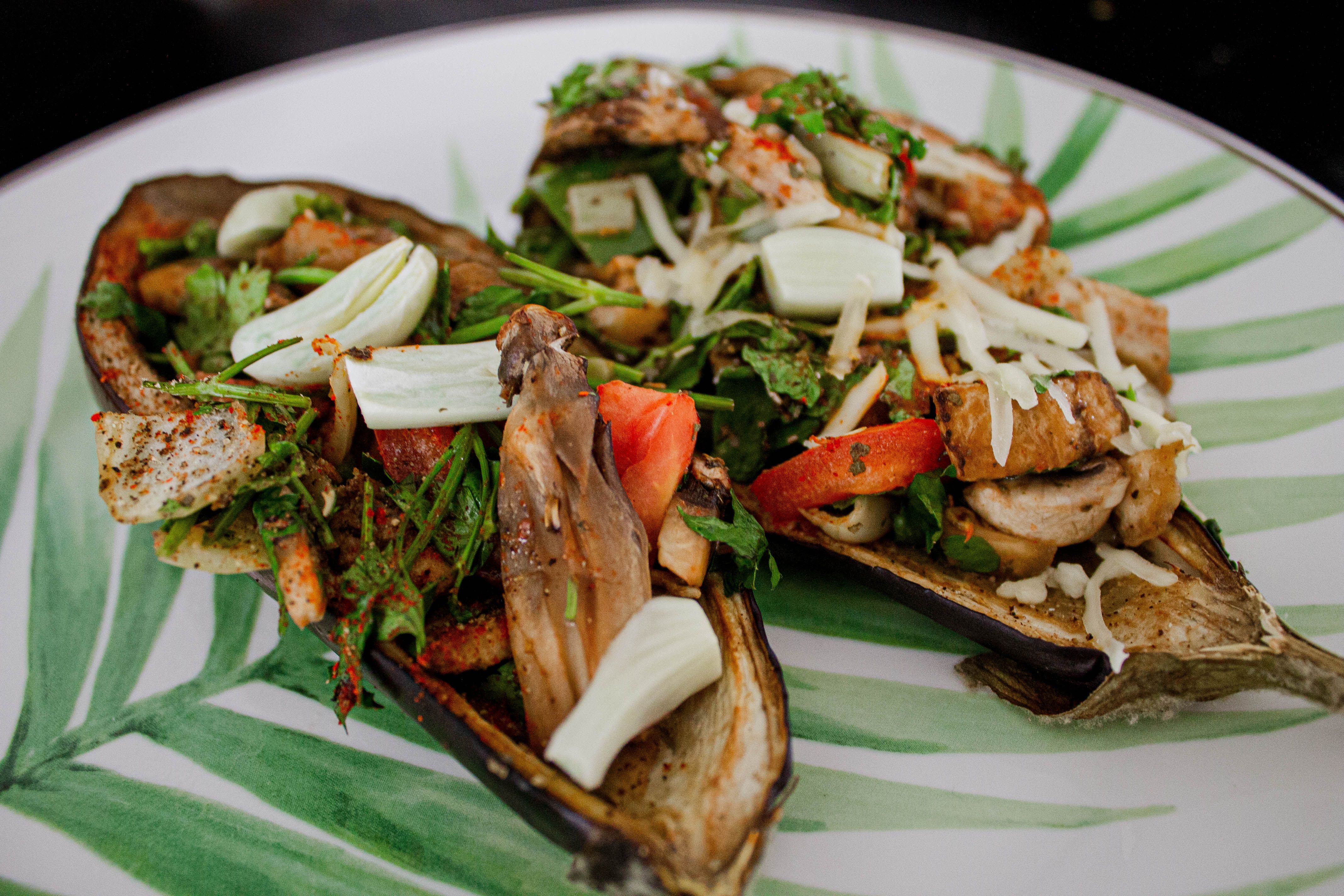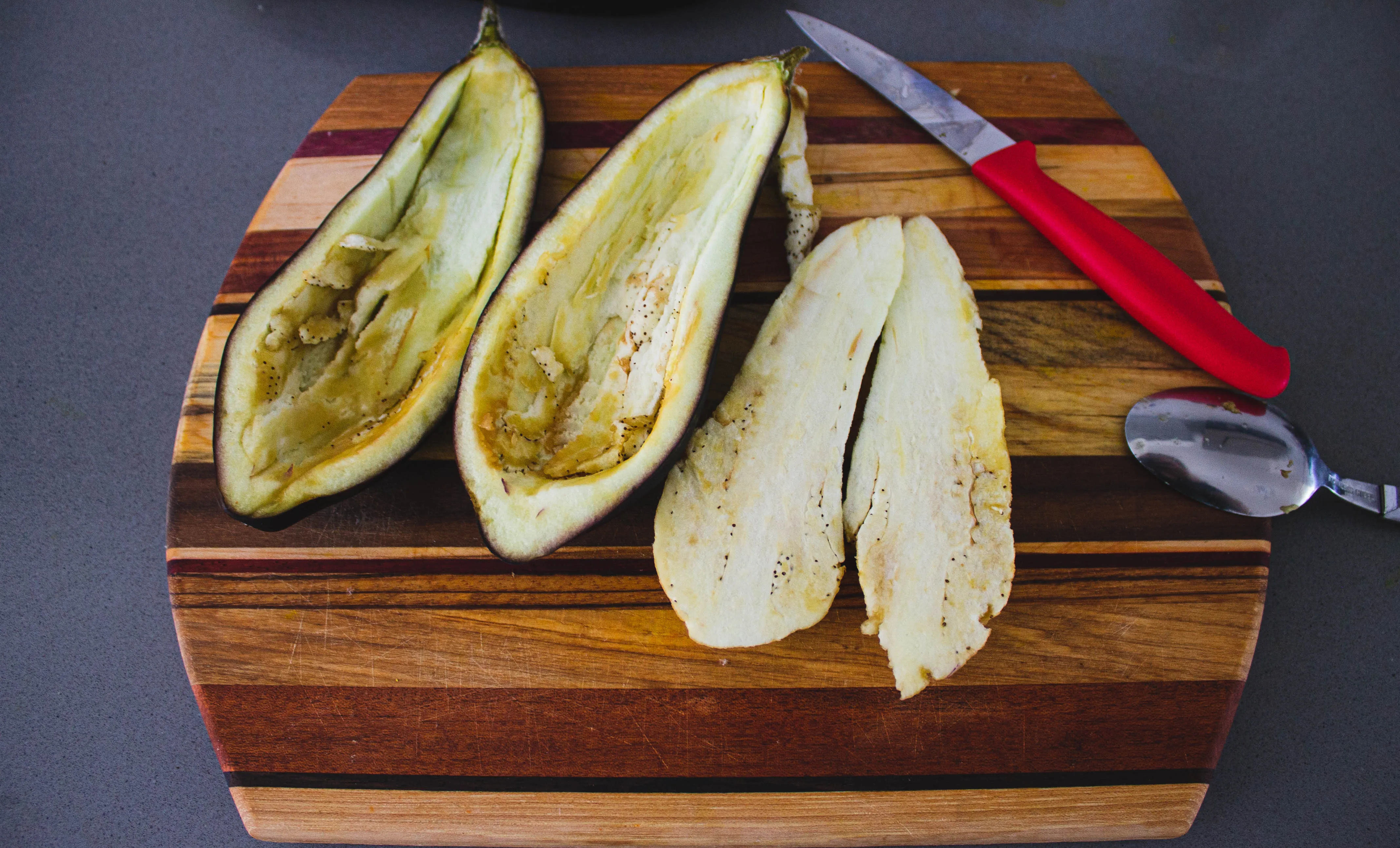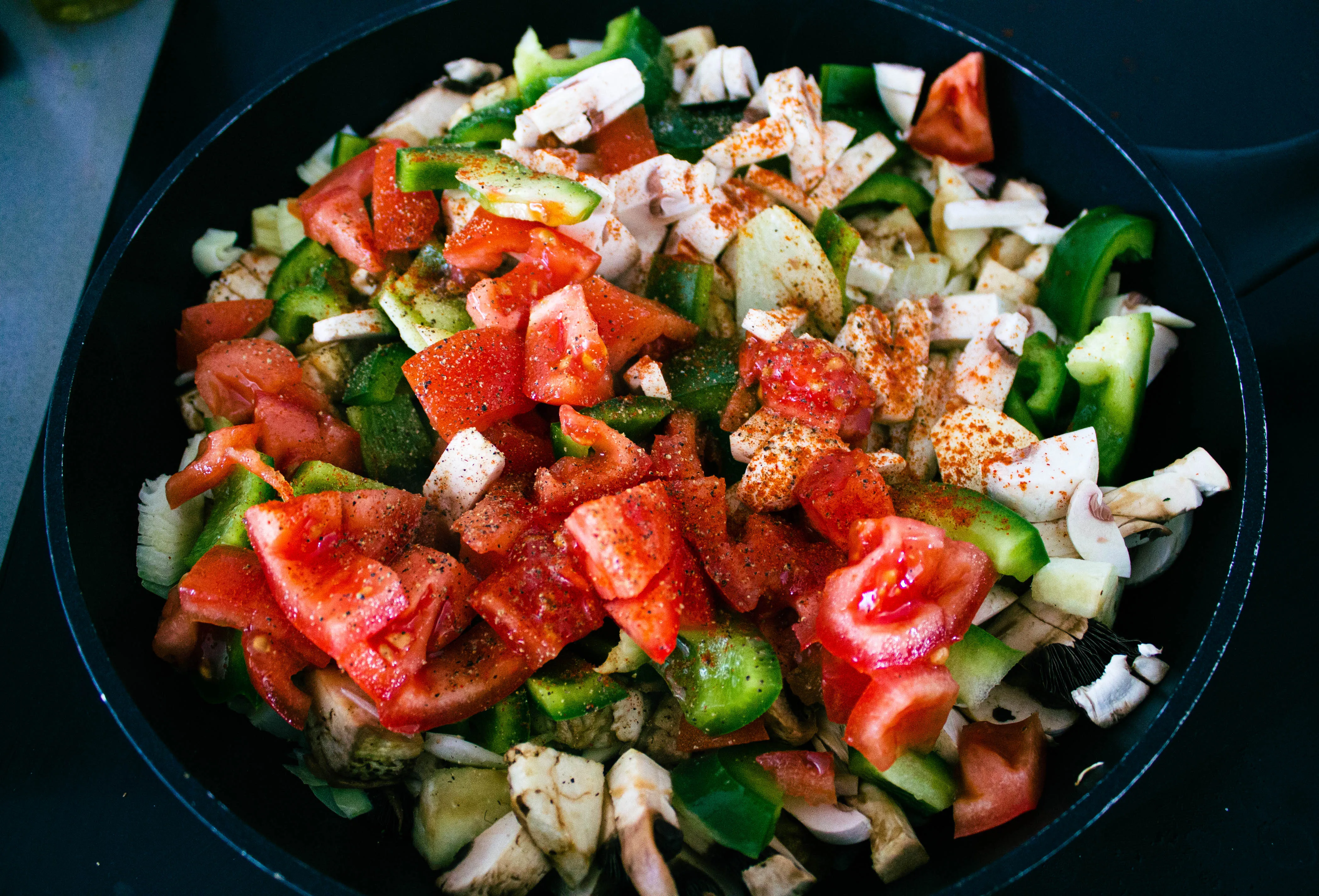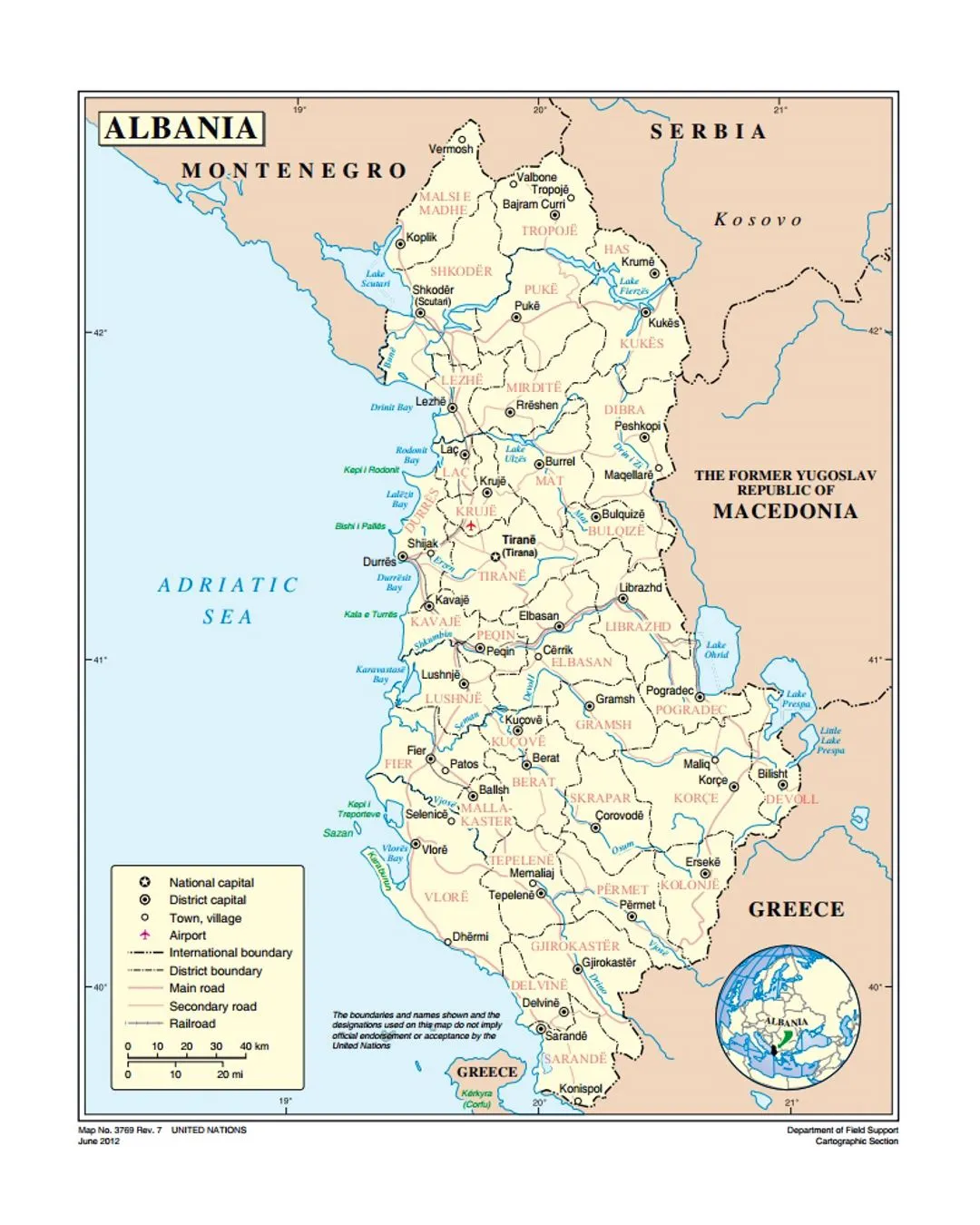
Vegan Patëllxhane të Mbushur
Ingredients
3 aubergines (eggplants) cut in half lengthwise
1 onion, minced
1 bell pepper, diced
2 cups mushrooms, chopped
1 tomato, diced
8 cloves of garlic, minced
1/4 cup parsley
2 tbsp basil
2 tbsp sage
2 tbsp paprika
Salt
Pepper
Olive oil for drizzling
Optional: Vegan mozzarella
Kitchen equipment
Oven
Baking dish or baking tray
A pan
Instructions
- Preheat the oven to 180C (360F).
- Gently remove the insides from your aubergines. Using a knife, gently cut along the edges of the seed core, roughly a centimetre from the edge. As you cut, your knife should fall naturally into the seed core. Use a spoon to scoop out this centre and set aside.
- Arrange your gutted aubergines on a foil-lined baking tray. Drizzle with olive oil, paprika, salt, and pepper, and bake for 20 minutes.
- While that's baking, heat olive oil in a pan over medium heat.
- Dice your aubergine cores.
- Add your onions, 2 cloves of garlic, mushrooms, bell pepper, tomato, and aubergine cores to the pan. Saute over medium heat until cooked.
- Once cooked, add the herbs and spices, continuing to stir throughout.
- Remove the aubergines from the oven. Spoon the vegetable mixture into the aubergine shells, filling each as much as possible.
- Mince the remaining garlic and sprinkle it into the aubergine stuffing. Each aubergine gets one clove of garlic.
- Drizzle the stuffed aubergines with more olive oil, and top with vegan mozzarella to taste, if you're using cheese.
- Return to the oven and bake for another 25 minutes.
A longer and more detailed description
Step-by-step instructions
The most important step is to stack your ingredients in an Instagram-friendly pile on your kitchen counter or workspace or what have you, take your pictures, and then, after you’ve already started cooking, realise your manky-looking kitchen sponge was in the background of every picture, leering at you and ruining any sense of aesthetic or deliciousness. This, you realise, is why you take super-zoomed in pictures of food. You have and maintain a clean kitchen, but it is a small kitchen, and the various other appliances and accoutrement of a lived-in space are impossible to fully purge from the picture. You will never live up to the standards set by those around you, and so you hide what you can, as you can, and still fail to do so.
Got that step done? Fantastic.
Slice your aubergines (or eggplant if you want to use the slightly sillier name) in half lengthwise, keeping the stem intact. Once sliced, the aubergine is getting disemboweled. Did you know aubergines are technically berries? That thought may become very clear to you as you run your knife along the edges of the aubergine’s core. If you’ve never gutted an aubergine before, you may not have known it has a core, but it does, and we’re removing it. Loosen the core with a knife, then use a spoon to scoop it out. If it comes out intact, lovely. If it breaks, also lovely. We’ll de dicing what’s left of it either way.
Like some arcane medieval torture, the disemboweled aubergine is now ready to roast in the admittedly tepid fires of the pre-heated oven. Drizzle the remains of the aubergine liberally with olive oil, paprika, salt, and pepper, and commit it to the fiery bowels of your oven, not to be seen again for another twenty minutes.

While the aubergines are contemplating their life choices, heat olive oil in a pan over medium heat. Mince two cloves of garlic, dice an onion (I used yellow, but you follow your heart), dice a bell pepper (what’s your favourite colour? use that one), chop mushrooms, dice aubergine cores, and toss all of these ingredients into the pan (if you do this literally, you will make a mess, so be warned). Dice your tomato and add it to the pan. Mix these over the heat until cooked, roughly ten minutes. Once cooked, chop your parsley and add it to the pan, along with your remaining herbs. I added more paprika, salt, and pepper here as well, but I am a menace, so it’s up to you how many spices to add.

Once your aubergines have finished their fiery penance, remove them from the oven. They have been redeemed and can be remade into something new, something better, something more pleasing. Fill each aubergine shell with your vegetable stuffing, filling it as much as possible. If things overflow, that’s okay. Life’s not about being neat or perfectly pleasant or remembering to take the manky sponge out of the initial shot. It’s about living, and living is sometimes messy.
Once the aubergines have been rebuilt in a new likeness, dice your remaining garlic and add it on top of the filling. You should have one minced clove of garlic per aubergine shell, though if you hate garlic, I recommend not doing this. Drizzle the shells with yet more olive oil like you’re a Phoenician merchant bound and determined to squander the last of your ancestral wealth so the kids can’t have it. If you’re using vegan mozzarella, add that here as well. Pop the entire arrangement back into the oven, this time for 25 minutes, and go do something else with your life. Personally, I curled up with a book, but I suppose you could do just about anything with those 25 minutes. You could learn the Korean alphabet, experiment with fancy teas, faff about on Reddit, have an existential crisis. Really, it’s up to your own creativity.
Come back after your existential crisis is complete to save your aubergines from their fiery crucible. They have now be reborn. What had been some boring old aubergines you found in the bottom of your vegetable drawer are now savoury purple boats of vegetables and flavour. Set them on a plate (or don’t, I’m not your parent), and serve immediately.
Urime të ëmbël!
Substitutions and suggestions:
For the mushrooms: The mushrooms here are your protein filling. I used fresh Bulgarian mushrooms that I got from the mushroom man at my local farmer’s market. These have a fairly earthy flavour that has a fair amount of body to it on its own, but which blends nicely with the lighter flavours of the other vegetables. If you don’t have these very specific mushrooms available or a mushroom man at your farmer’s market, or - and let’s not be ridiculous here - a farmer’s market, regular white mushrooms could also be substituted in. I recommend adding more spices and herbs, and maybe a dash of soy sauce if you go this route. If you don’t like mushrooms, you could substitute in lentils, but I’ll warn you now, you’re on the wrong recipe site.
What I changed to make it vegan
Patëllxhane të Mbushur is traditionally made with some sort of minced meat as the filling, be it lamb or beef. I used mushrooms as my substitute here and added in a few more vegetables and herbs to compensate. I also couldn’t find consistency on whether it usually has cheese - some recipes did, some didn’t - but for those that did, they generally use fresh mozzarella. I substituted that with sprinkled vegan mozzarella, which I think adds a nice flavour, but again, is totally optional.
A brief context for this food

As might be expected from its location on the Mediterranean Sea, Albanian cuisine is a Mediterranean cuisine, with a heavy use of olive oil, garlic, fish, fruit, and dairy. However, as with other nations in the Balkans, Albanian cuisine has also been influenced by its history of Ottoman colonisation, and the blending of ingredients and techniques from Turkey with these Mediterranean traditions.
Patëllxhane të Mbushur is one such dish. Also known as “imam biyildi,” it is first recorded in an Ottoman cookbook in 1844, where it is listed as a “tava,” or pan dish. While Mehmet Kamil does not list a particular origin for the dish, its name has led to some speculation about its origin. “Imam bayildi” translates from Turkish as “the imam fainted” or “the imam swooned,” with the difference between the two translations reflecting the difference in origin stories. In one story, an imam married a lady who made this dish for him. He loved it so much that he asked her to make it every day. When he found out how much olive oil it used, though - and the expense of it - he fainted from the cost. In another story, the imam was looking for a new food to try. When he tried this dish, it was so delicious that he fainted from the flavours.
Both of these stories, much like our origins for borani banjan, strike me as just-so stories. They may have some kernel of truth to them, but they may also just be flavour text on an otherwise mundane story of chef’s experiments. We do know that aubergines represent a large subset of Ottoman cuisine, and that chefs working in Ottoman palaces were often incentivised to create new and interesting dishes. While we don’t know the exact history of this dish, it may have originated in one such Ottoman palace, then spread throughout the empire.
Patëllxhane të Mbushur, however, is a uniquely Albanian variant of this dish, and reflects Albania specifically. Rather than being vegetarian or bathed in olive oil, the aubergines are instead roasted or baked, and drizzled rather than left to simmer in the oil. It reflects the mountainous regions of Albania, with its reliance on hearty, meaty flavours and warmth. Rather than requiring the immense wealth of being able to bathe an aubergine in olive oil, it instead becomes a dish able to be cooked by anyone with access to an aubergine, the stuffing they already had on hand, and some way to warm the two. What may have started as an Ottoman dish adapted as it moved, becoming a reflection of Albania itself.